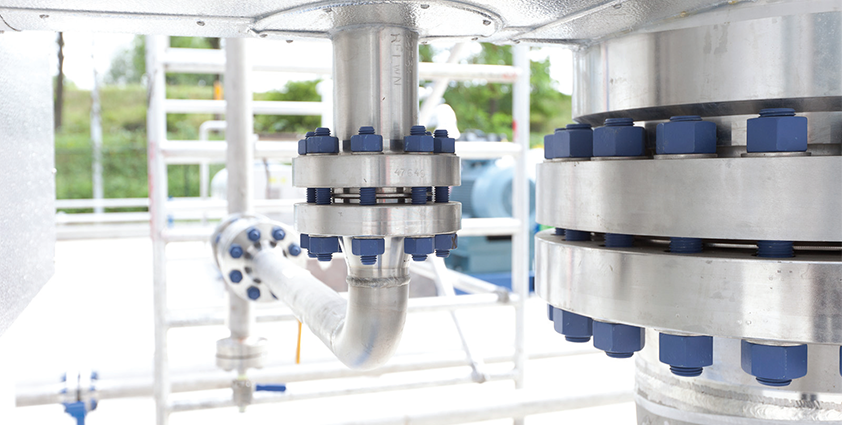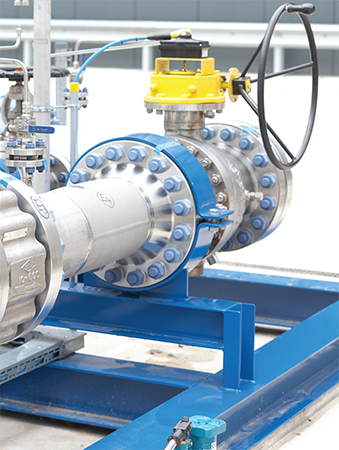
Petrogas Gas Systems
Engineered to last
Petrogas Gas Systems was established in 1948 in the wake of the discovery of a gas field near Coevorden, in the Netherlands, and the need to construct stations for local distribution of this new resource.
Since then, the business’ focus has shifted somewhat from primarily downstream activities in the Netherlands to the wider spectrum of gas treatment services. As such, Petrogas is recognised globally as a supplier of engineering, project management, fabrication, commissioning, and erection services for gas treatment throughout the value chain. In particular, the in-house fabrication of piping, vessels, heat exchangers and control panels makes Petrogas a flexible and independent partner.
In fact, today most of Petrogas’ work takes place outside this home market within the Middle Eastern region, where gas is not only plentiful as a natural resource, but equally, demand for electricity has seen this harnessed in many new build power stations. Within Saudi Arabia, there is a requirement for a certain volume of additional power to be installed over the next five years, so this region has become one of Petrogas’ major focuses. Additionally, developing countries such as India also have huge demand for electrical power from gas-fired power stations, creating another market of high interest for Petrogas.
This diversification has helped Petrogas to weather the more difficult economic conditions of recent years. Having been strongly dependant upon the downstream market, the company recognised that the deteriorating economic situation was having an impact upon its customers in that sector. As such, it developed its business model into another revenue stream, namely the upstream market.
Regardless of sector though, Petrogas’ strategy remains the same, as sales director Edwin Hoogwerf elaborates: “Our focus remains on providing solutions for customers to smartly treat their natural gas. We don’t sell off-the-shelf systems, nor do we recycle our previous concepts – instead we look at the actual problem or challenge that the customer is facing and then customise a system specifically for that application. Our strength is in smart thinking together with the client to create systems that they could not have developed themselves.”
 Currently, Petrogas is in the process of launching three new basic developments – a Black Dust filter element, Nitrogen Generation Units, and amine gas sweetening system. Process engineering manager Rob Braat elaborates on some more of the technical aspects of these developments: “At present we see a market for large volumes of nitrogen at a lower pressure, which can be achieved easier and more cost-efficiently than with the conventional liquid nitrogen evaporation systems. Therefore we have developed a solution that produces nitrogen through compressed air and a membrane separation unit. The membrane removes the oxygen from the air, along with a small amount of nitrogen, leaving the client with almost oxygen free nitrogen that can be used to purge large systems and vessels. This is a much more economic system, than using bottled nitrogen, as it can create a continuous supply of low pressure, high purity nitrogen.”
Currently, Petrogas is in the process of launching three new basic developments – a Black Dust filter element, Nitrogen Generation Units, and amine gas sweetening system. Process engineering manager Rob Braat elaborates on some more of the technical aspects of these developments: “At present we see a market for large volumes of nitrogen at a lower pressure, which can be achieved easier and more cost-efficiently than with the conventional liquid nitrogen evaporation systems. Therefore we have developed a solution that produces nitrogen through compressed air and a membrane separation unit. The membrane removes the oxygen from the air, along with a small amount of nitrogen, leaving the client with almost oxygen free nitrogen that can be used to purge large systems and vessels. This is a much more economic system, than using bottled nitrogen, as it can create a continuous supply of low pressure, high purity nitrogen.”
Within the Asian market, as well as many other regions across the globe, many of the easily accessible oil and gas resources have already been utilised. Therefore in future developments more challenging supplies will come to the forefront bringing with them greater technical difficulties and costs in order to secure useable energy. “One of the major problems we have seen is the presence of Black Dust within pipelines. Some of this is the result of pipelines ageing and chemical reraction of H2S (in sour gas) with iron oxide. These very fine particles often become stuck in equipment, and if they pass through filters then they can cause all kinds of technical problems within the regulators and rotating equipment downstream. Therefore it is important to filter this out through combinations of cyclones, magnetic separation and better filter elements. What we are trying to do at the moment is to develop ever-better components for this specific issue,” comments Rob.
As a company that made its name in the downstream sector, one of the primary intentions of Petrogas is to attain this same position within the upstream section. In order to achieve this the business has entered into a relationship with Ascom – a market leader in separation technology for gas applications. “We do not have the specific technology in upstream separation techniques, which is where Ascom comes into play,” begins Edwin. “These internal technologies in turn require the sort of systems and vessels that we as Petrogas are able to provide. Therefore clients receive the added value of Ascom’s intelligent solutions combined with our expertise in designing customer-specific systems.
He continues: “This can be the separation of water from oil, gas and water from oil, or even liquid residue from big natural gas flows. Both companies being based in the Netherlands provides us with a strong position for putting together a market strategy that is beneficial to both businesses. Equally, we are both very flexible, which enables us to quickly decide how to proceed with a certain tender or specific customer.”
In the case of Petrogas’ more established downstream market though, the company is employing a slightly different approach. “We are trying to move ourselves toward a more high end offering, as we see competitors emerging from countries such as India and China that will take the lower end of the market. Therefore for very simple stations we will struggle to be competitive. Consequently, we are moving further towards the more specialised applications and difficult engineering projects, and in that way we expect to start to build our projects more within the country of destination, than our workshops. As such our focus in the long term is going to be on the engineering portion of the project, as opposed to the construction side,” concludes Edwin.
Petrogas Gas Systems
Services: Gas treatment installations